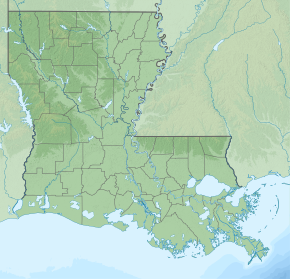| Battle of Yellow Bayou | |||||||
|---|---|---|---|---|---|---|---|
| Part of the American Civil War | |||||||
| |||||||
| Belligerents | |||||||
|
|
| ||||||
| Commanders and leaders | |||||||
|
|
| ||||||
| Units involved | |||||||
|
| District of Western Louisiana | ||||||
| Strength | |||||||
| 4,500 plus cavalry | 5,000 | ||||||
| Casualties and losses | |||||||
| 267–360 | 452–608 | ||||||
Location in Louisiana | |||||||
The Battle of Yellow Bayou, also known as the Battle of Norwood's Plantation,[1][2] (May 18, 1864) saw Union Army forces led by Brigadier General Joseph A. Mower clash with Confederate States Army troops commanded by Brigadier General John A. Wharton in Avoyelles Parish, Louisiana during the American Civil War. This was the final action of the Red River campaign in which a Union army under Major General Nathaniel P. Banks was repulsed by Confederate forces led by Major General Richard Taylor. The failed Union campaign almost ended in disaster when an accompanying Union fleet led by Rear Admiral David Dixon Porter was trapped at Alexandria, Louisiana, by low water in the Red River. An engineering feat saved the fleet, allowing Banks' army to complete its withdrawal.
While Banks' army waited for a bridge to be built across the Atchafalaya River, Wharton's forces began pressing the Union troops from the rear. Mower was ordered to halt their advance. Mower's forces subsequently drove the Confederates back to their main line. The Confederates then counter-attacked and a back-and-forth battle erupted, with the Confederates finally repulsed. A thicket between the contending sides caught fire, ending the fighting after a few hours. Mower's holding action allowed the Union army to safely cross the Atchafalaya on May 19–20.
